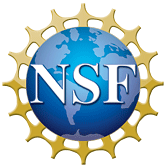Colloquium Abstract - Massingill - 2025Feb28
February 28, 2025
11:00am Mountain
Kyle Massingill (NRAO)
Tropospheric Phase Correction Using Water Vapor Radiometers
Abstract
I present on the development of calibration strategies for the next generation Very Large Array (ngVLA). The ngVLA is the planned large scale interferometric array that will be primarily based in the American Southwest, but will include outlying sites across the United States, Mexico and Canada. The continental sized baselines available to the array, combined with a densely populated core, will enable ngVLA to be an order of magnitude more sensitive than the current VLA, while being able to achieve sub-milliarcsecond-resolution. Temporally variable water vapor in the troposphere will introduce phase error to observations made with ngVLA. Calibration of this phase error is essential for the ngVLA to meet its science requirements.
There are multiple established techniques for phase correction, and the ngVLA team is exploring the feasibility of different approaches. Techniques such as fast switching and self-calibration have been deemed sufficient at lower frequencies but have limitations in the higher frequency bands. Due to this, a water vapor radiometer (WVR) system is being developed for ngVLA. This system will continually estimate changes in the water vapor column density in the main antenna beam. The WVR system will be sensitive to the pressure broadened 22 GHz water vapor line in a variety of atmospheric conditions.
I present on the development of techniques for tracking small changes in the tropospheric wet delay through observations of the 22 GHz water line. I give updates on our approach to using atmospheric modeling to write algorithms to translate WVR observations to precipitable water vapor (PWV). I compare the proposed ngVLA WVR with other 22 GHz instruments being developed for tracking water vapor column density.
.
Local Host: Bryan Butler




Connect with NRAO